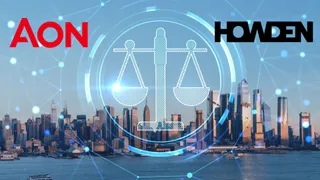
US cyber reinsurance market overview: navigating an evolving landscape
As cyber risks grow more complex, cyber reinsurance in the US has evolved from a niche product into a central component of risk management.
This evolution is driven by insurers’ increasing confidence in their portfolio performance, particularly from an attritional loss ratio perspective, leading many to reduce quota share cessions.
Instead, insurers are shifting their reinsurance strategies toward tail protection. Systemic risks such as automated wiperware, cloud outages, and dependencies on third party providers are driving demand for catastrophe protection.
This is being addressed through non-proportional products such as event-based reinsurance and aggregate stop-loss.
These shifts are aligned with the current loss environment, with recent events such as those involving CrowdStrike, CDK, and Change Healthcare underscoring the need for protecting against systemic vulnerabilities in digital infrastructure.
There is no doubt that, in light of these high-profile aggregating events, the need for cyber reinsurance remains high.
Increased demand and market sophistication
In recent years, insurers have made notable progress in refining their understanding of cyber risks.
This has led to the development of more sophisticated products designed to address the evolving threat landscape.
This growing sophistication has been bolstered by investment in data analytics, risk modelling, and informed underwriting.
The challenge for reinsurers lies in the fact that many cedants are purchasing less quota share reinsurance.
As a result, reinsurers are under pressure to adjust their pricing and capacity offerings to remain competitive in a crowded market.
The reduction in quota share purchasing signals a shift toward greater risk retention by insurers, which in turn pressures reinsurers to adapt.
“Evolution of risk models is particularly important in a market where cyber threats are constantly changing.”
More reinsurers and maturing models
Despite the challenges posed by evolving pricing and terms, the cyber reinsurance market has seen an influx of new entrants, increasing the overall supply of reinsurance capacity.
These new players bring fresh capital and innovative approaches to the market, heightening competition, even in the face of risk trends.
Reinsurers are benefiting from more accurate portfolio assessments. The maturation of cyber risk models has strengthened the robustness of ceded reinsurance discussions.
This improvement is vital, given the ever-evolving nature of cyber threats, which can result in sudden, large-scale aggregating losses.
The evolution of risk models is particularly important in a market where cyber threats are constantly changing, and accurate and detailed portfolio assessments are key.
The role of cyber reinsurance
Recent high-profile cyber incidents serve as stark reminders of the potential for large-scale aggregation events. These events reinforce the vital role reinsurance plays in protecting insurers from catastrophic losses.
The aggregation risk in cyber insurance is a constant concern for insurers. A single event can affect multiple insureds across different sectors or geographies.
In response, reinsurers have become an essential part of the solution by providing capacity to cover large, systemic risks that could quickly overwhelm primary insurers.
Even as the market adjusts, the importance of robust and relevant cyber reinsurance arrangements cannot be overstated.
Challenges and opportunities
Although the US cyber reinsurance market faces challenges from softening conditions and margin pressures, the need for cyber reinsurance remains strong.
The overall dynamics of the market are shaped by macroeconomic factors, including interest rates and opportunities in other asset classes, but cyber reinsurance remains attractive due to the returns it offers compared to traditional credit markets.
“The cyber reinsurance market has seen an influx of new entrants.”
Catastrophe events and interest rates play a role in driving demand, but despite these challenges, cyber reinsurance is still viewed as a vital part of insurers’ risk management strategies.
Howden Re’s position
As the cyber reinsurance market continues to evolve, Howden is positioning itself to lead in the insurance-linked securities (ILS) space.
By combining global corporate finance capabilities with expertise in traditional broking and analytics, Howden differentiates itself from its peers.
We maintain a dialogue with institutional investors, helping them understand the ILS sector and these instruments.
Our integrated approach, combining cyber and property expertise, allows us to offer comprehensive solutions that meet client needs.
Through this approach, Howden has been able to break down silos across business lines, tailor its offerings, and deliver better outcomes for clients in the cyber reinsurance space.
Paddy Bousfield is managing director at Howden Re. He can be contacted at: paddy.bousfield@howdenre.com
Matt Webb is director at Howden Re. He can be contacted at: matthew.webb@howdenre.com
For more news from the American Property Casualty Insurance Association (APCIA) click here.
Did you get value from this story? Sign up to our free daily newsletters and get stories like this sent straight to your inbox.
Editor's picks
Editor's picks
More articles
Copyright © intelligentinsurer.com 2024 | Headless Content Management with Blaze

